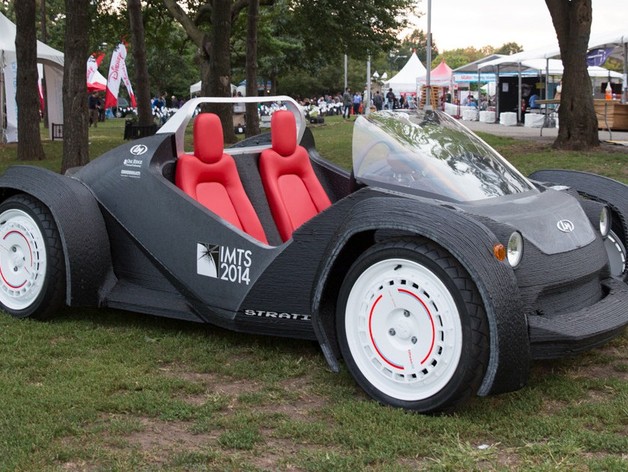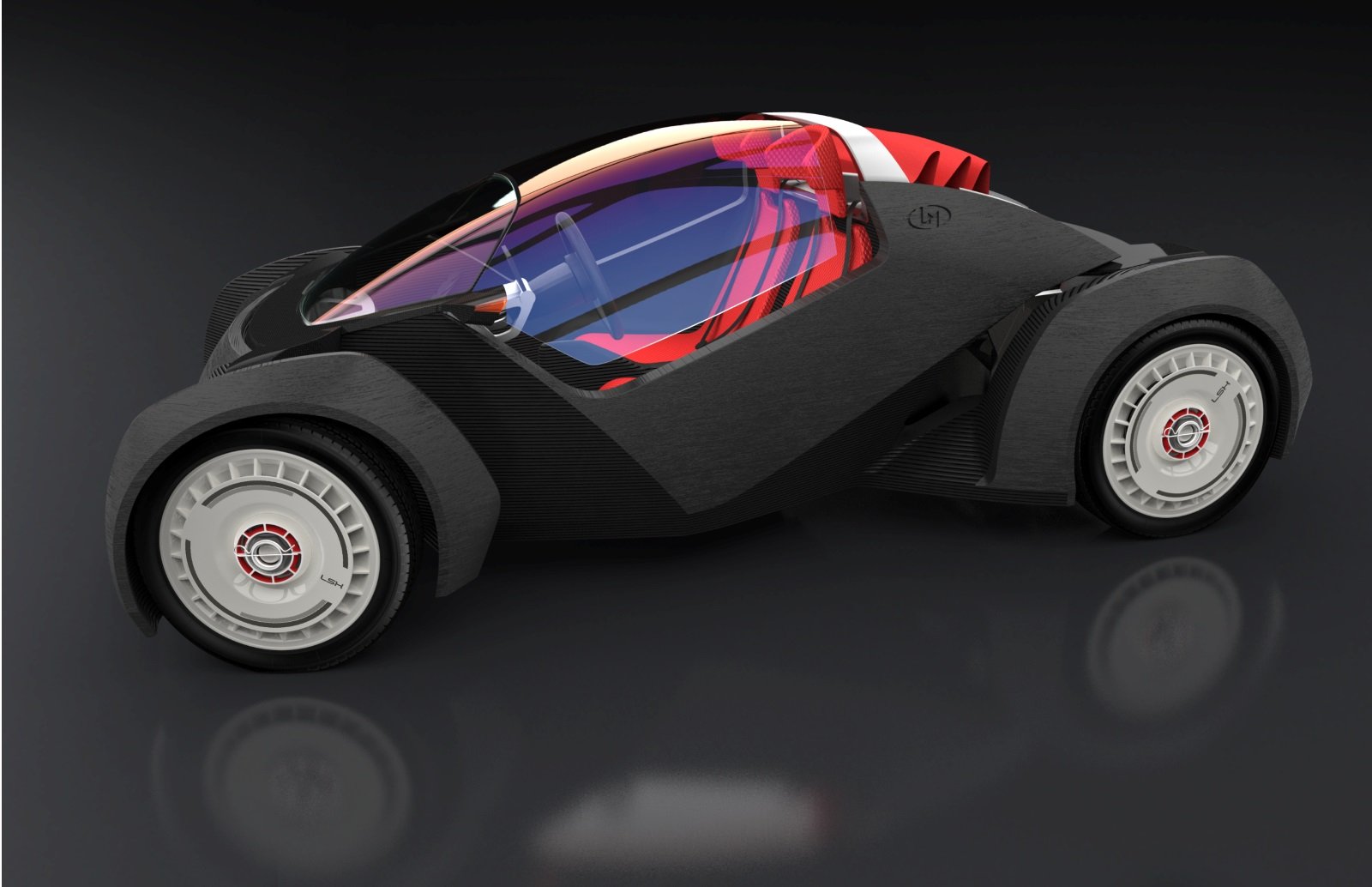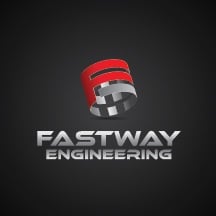In Multi-Material Machinery: Part I, we took a brief look at the current state of consumer vehicle chassis design with cutting edge companies like Ford & Hyundai using high strength steel and aluminum alloys and traditional processes. This represents real innovation coming from the current OEM's sitting on the showroom floor today.
Now, let's see some prototypes that could make it into our driveways sooner than we think! Here are the 3D printed cars that have been showing up on stage recently...

Paving the way back in 2010, the first 3D printed car is the Urbee working prototype (pictured at the top) from KOR Ecologic in Winnipeg, Manitoba, Canada. It has a hybrid drivetrain with a primary electric motor and a very small internal combustion backup. Due to its futuristic, aerodynamic design, the engineers at KOR decided to print it, instead of investing the time and money in molding the one-off body out of Fiberglas. It has 10 body panels printed out of ABS using an FDM process from Stratasys. As can be seen in the photo on the right above, the body panels utilized some structural ribbing to keep stiffness up, and weight down. It's successor, the Urbee 2, is currently being designed, and the designers note that honeycomb structures will be utilized.

Next, we have the world's first electric 3D printed car from Local Motors, called the Strati, which was introduced in 2014. In true Local Motors fashion, the design is open source, and is a modest "neighborhood" roadster with the powertrain from a Renault Twizy.
The frame and body were printed by Cincinnati Incorporated's Big Area Additive Manufacturing (BAAM) process (overview video here), which uses an 80/20 mix of ABS and Carbon Fiber reinforcement. The total print time was around 45 hours. This was followed by a day of milling (to smooth out some of the exterior surfaces) and then 2 more days to complete the final assembly.
As can be seen in the video below, the chassis design utilizes a monocoque-style layout with a crosshatch ("honeycomb" style) design in the cross section of the panels. This is a common practice for FDM 3D printers, and makes for a strong yet lightweight structure.
Soon thereafter, Oak Ridge National Laboratories unveiled their 3D printed Cobra at the North American International Auto Show (NAIAS). It was also printed using the (same?) BAAM machine, and using the same 80/20 mix of ABS and Carbon Fiber that the Strati was printed with. The cobra had a total print time of only 24 hours, which is almost half that of the Strati. Either ORNL fine tuned their machine a bit since the Strati, or there were less printed parts on the cobra. Or a bit of both. Either way, what's also different here, is that the body was also sanded and painted to become a Class-A surface, so it looks practically identical to the original aluminum bodied Cobra race cars it replicates. Along with the traditional racing paint scheme, this "feels" more like a "real" car.

Much like the Strati, the Cobra's frame is fully 3D printed, but the design looks a bit different. As shown in the video below, the frame of the cobra is a stressed tub, with bolted on body panels. This is not a far departure to the current design with an aluminum tub and Fiberglas panels, which is why it is the perfect car to try this new manufacturing process on (comparatively little redesign needed). However, according to the video below, it took 6 weeks to put the car together. That's on par in the "let's build a car for an upcoming show" world but not very impressive for the "let's manufacture cars for a profit" world.
All-in-all, these are some really impressive fully functioning prototypes. Certainly this is a big step forward in commercializing the technology for consumer vehicles. Major advancements have been made in the area of frame design, considering they are made out of ABS plastic! So, where does 3D printing fall in the scheme of things? Let's review.
Back in the hot rod days, a car chassis consisted of a mild steel perimeter or ladder frame with a body that literally just sat on top of it. This "body-on-frame" design was cheap and easy to build and customize, however the frames twisted easily and there was very little crash protection. As welding processes and sheet metal engineering advanced, the unibody design was developed, consisting of many individual parts stamped and welded together to make a single, stressed body. The strength/weight ratio of the unibody is far superior to that of the body-on-frame design, and much safer in the unfortunate case of an accident.
Consequently, in the motorsports world where maximum strength/weight ratios are desired, unibodies are retro-fitted (or replaced entirely) with alloy steel space frames with lightweight composite body panels. The added stiffness allows for superior suspension dynamics and increased safety, and the use of high output drivetrains easily makes up for any possible increase in weight. Ultimately as design, manufacturing, and materials advanced, so did chassis engineering with the advent of the full carbon composite monocoque as shown below in an open-wheel formula style configuration. This latest technology has now made it into production at manufacturers like Porsche, Ferrari, and BMW.

Just like each one of these advancements in material & process, 3D printing car frames represents a step forward. In the same way a design is optimized to accommodate a stronger material, so too must it be changed to accommodate a weaker one, such as the ABS-derived thermoplastics utilized in these 3D printed cars. An enthusiastic engineer welcomes the challenge!
However, in order to fully investigate all options, the prudent design engineer must utilize the most advanced engineering software and simulation techniques. From using FEA to design the stiffest chassis, and CFD to predict accurate forces due to drag and lift ("downforce"), to using thermal analysis to optimize the 3D printing process itself.
So, whether your designing for performance, reliability, or manufacturability, Fastway Engineering expertise and custom training classes are focused on getting immediate results. Contact Us Today to bring you up to speed on the latest technologies, both on and off your manufacturing floor.
Not ready to contact us, but still want to stay in touch? Sign up for our newsletter below, and get information on Training Discounts, Industry News, Fun Events, and other smart stuff!



